 |
 |
 |
| |
Efficacy and safety results at 48 weeks with the novel NNRTI, TMC125, and impact of baseline resistance on the virologic response in study
TMC125-C223
|
| |
| |
Jules Levin
Intl AIDS Conference, Toronto, Aug 15, 2006
Poster No. TUPE0061
Note from Jules Levin: there was a mean viral load reduction of -1.01 log after 48 weeks of treatment in this study of highly treatment experienced and resistant patients. Patients achieving this used the 800 mg bid dose. Viral response varied depending on how many NNRTI drug mutations patients had. If patient had no NNRTI mutations the viral load reduction was a potent -1.67 log copies; if the patient had 1 mutation viral load reduction was -1.38; 2 mutations -0.9, and 3 or more mutations -0.54 log copies. At the Resistance Workshop there was a poster on this topic and this poster is reviewed on the NATAP website. The key NNRTI mutations are K103N and Y181C. Response to TMC125 varies according to these mutations as well.
Impact of baseline K103N or Y181C on the virological response to the NNRTI TMC125: analysis of study TMC125-C223
- (06/20/06)
Cohen Cal,1 Steinhart CR,2 Ward DJ,3 Ruane PJ,4 Vingerhoets J,5 Peeters M,5 White A,5 Baeten B,5 de Bethune M,5 Woodfall B5
1CRI of New England, Boston, MA; 2Mercy Hospital, Miami, FL; 3Dupont Circle Physicians Group, Washington, DC;
4Lightsource Medical, Los Angeles, CA, USA; 5Tibotec BVBA, Mechelen, Belgium
ABSTRACT
Methods: TMC125-C223 is a randomized, controlled study of TMC125 in 199 patients with documented NNRTI resistance and 33 primary protease inhibitor (PI) mutations. Patients were randomized to TMC125 (400mg or 800mg bid) with an investigator selected background, or standard-of-care control regimen.
Results: Median baseline viral load (VL) was 4.7 log10 copies/mL and CD4 count 100 cells/mm3.
At 48 weeks, the mean reduction in log10 VL (intent-to-treat (ITT), non-completer = failure) was -0.88, -1.01 and -0.14 for the 400mg, 800mg and control arms, respectively, the difference for both TMC125 doses versus control was statistically significant (p<0.05).
CD4 cell counts increased by 58, 61 and 13 for the 400mg, 800mg and control arms, respectively.
Virologic failure on both TMC125 arms was 9%; in the control arm, 98% of patients discontinued study, 78% due to virologic failure. The comparison of safety was confounded by the lower median duration of treatment in the control arm of 17.9 weeks, versus 47.7 weeks in both TMC125 groups.
Grade 3 and 4 adverse events (AEs) (all causes) were reported in 43% of patients on TMC125; 17% discontinued due to AEs.
At baseline, patients had a median of two NNRTI mutations and the phenotypic median fold-change (FC) to efavirenz, nevirapine and TMC125 was 41, 61, and 1.7, respectively.
The virologic response by number of NNRTI mutations at baseline is shown for the 800mg group (dose selected for Phase III development as new 200mg formulation).

Conclusions: In this study, TMC125 showed high rates of sustained efficacy at 48 weeks in heavily pretreated patients. The analysis of response by baseline resistance shows that TMC125 retains activity in the presence of multiple NNRTI mutations where current NNRTIs are not expected to be effective.
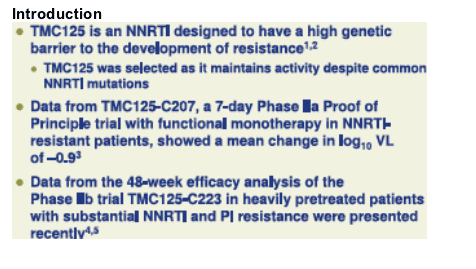
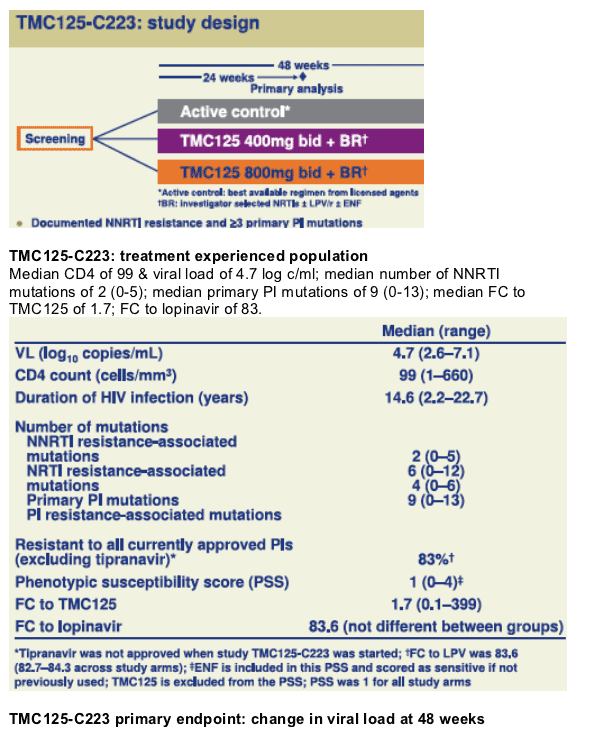
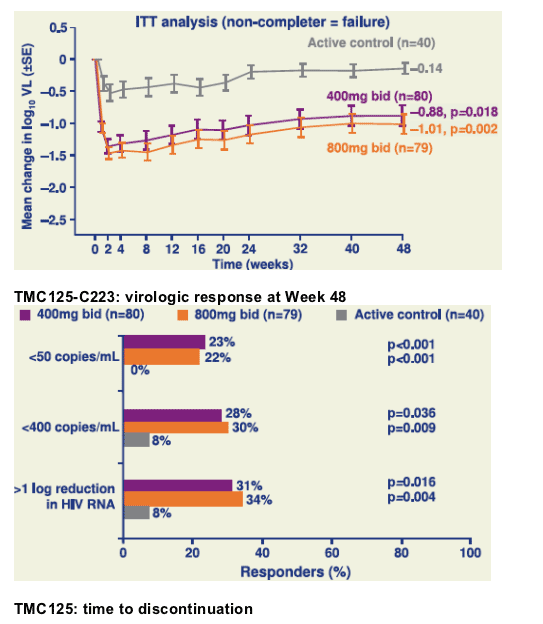
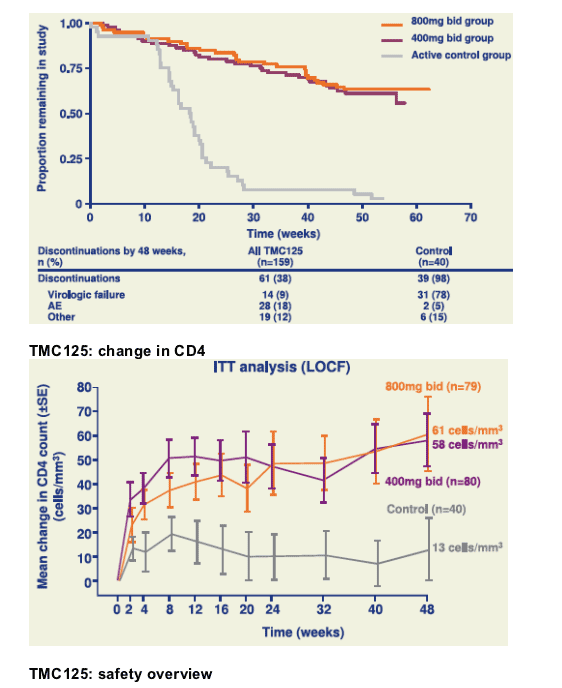
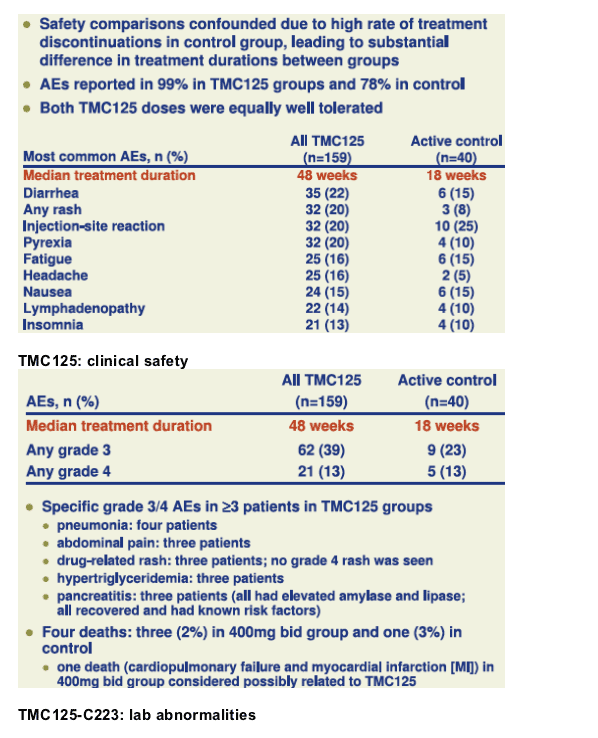
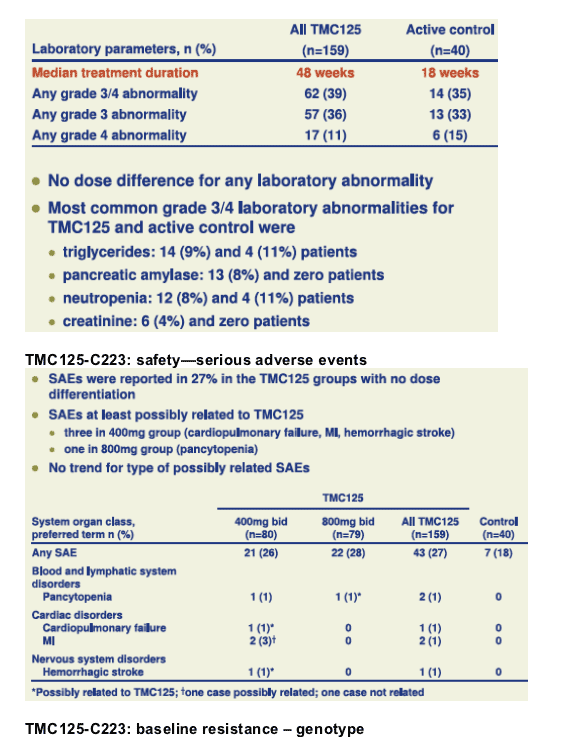
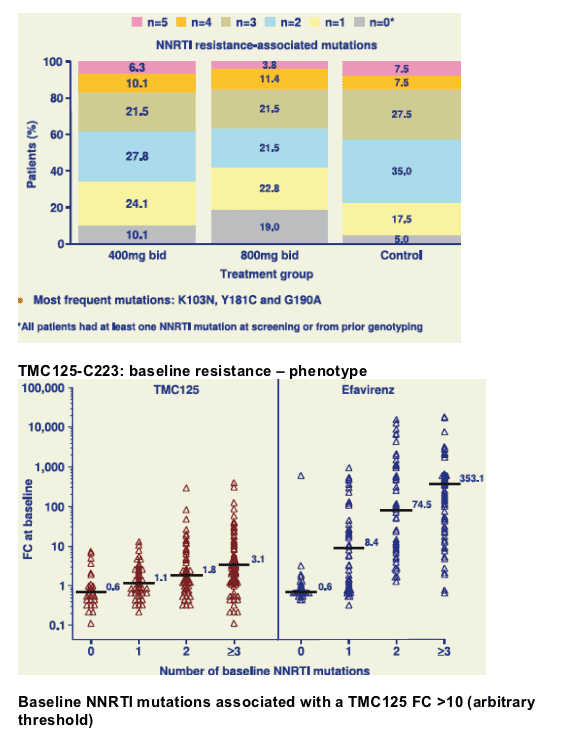
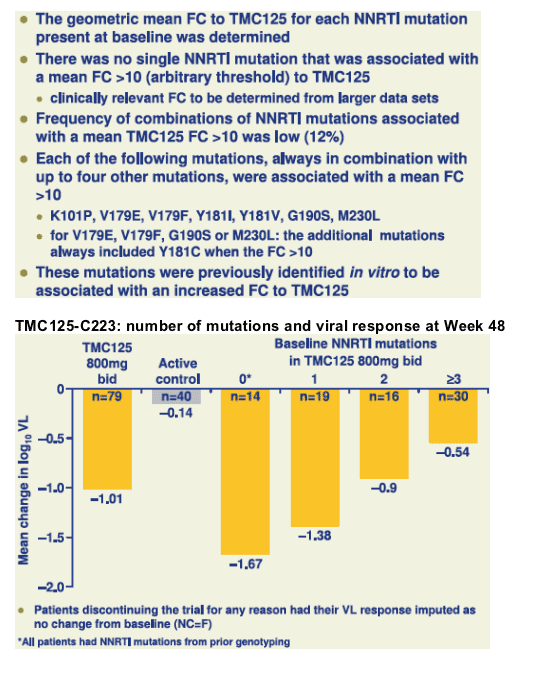
|
| |
|
 |
 |
|
|